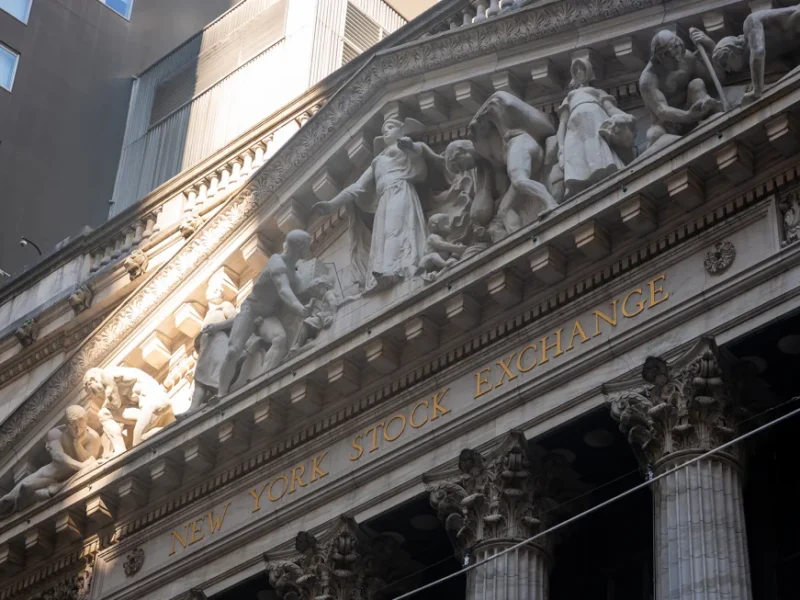When Wall Street experiences a meltdown like the one on Monday, it’s easy to get caught up in the chaos and worry about the state of the world. If the experts are panicking, it must be serious, right?
Not necessarily, in this case.
The turmoil on Wall Street and in global equity markets was real, with stocks dropping 3% and the Dow falling over 1,000 points for only the 15th time in its 128-year history.
However, Monday’s panic was akin to a child’s tantrum after being denied ice cream for dinner.
Several factors contributed to the dramatic reaction, including thin trading volume as many Wall Streeters head to the Hamptons for their semiannual break. Despite the market drama, the US economy remains strong, though it is experiencing some turbulence.
“The sky is not falling yet,” said CNN analyst Rana Foroohar on Monday. “And I’m not too worried about Wall Street becoming poor.”
Stocks showed signs of recovery on Tuesday, starting in Japan, where the Nikkei 225 rebounded 10% after a 12% drop on Monday. US stock futures were also broadly, if cautiously, higher on Tuesday.
Reason 1: The jobs report.
The US unemployment rate for July was expected to stay at 4.1%, but it rose to 4.3%. While this isn’t ideal, it’s not typically the type of news that would cause a massive selloff. Much of the increase came from people reentering the workforce, rather than layoffs.
Goldman Sachs analysts pointed out that it’s just one month of data. “We are hesitant to take the July jobs numbers as a new trend,” wrote Jan Hatzius, Goldman’s chief economist, in a client note. “It is usually a mistake to infer too much from one jobs report absent a major shock that abruptly changes the picture.”
It’s important to understand that the unemployment rate rises both when people re-enter the job market and when businesses impose temporary layoffs. Both of these occurred last month. Over 70% of the increase in July was due to temporary layoffs, which “might reverse and are not a good recession predictor,” according to Goldman analysts.
There’s also some debate about whether the market misinterpreted the Bureau of Labor Statistics’ (BLS) statement regarding Hurricane Beryl, which hit the US Gulf Coast in late June and early July. The BLS indicated that Beryl “had no discernible effect on the national employment and unemployment data for July.” Labor economist Aaron Sojourner from the WE Upjohn Institute for Employment Research clarified that BLS meant Beryl didn’t affect their data collection, not the unemployment rate itself.
BLS provides estimates, not interpretations. As Sojourner, a former member of the White House Council of Economic Advisers, noted, “When asked if the glass is half full or half empty, BLS replies that there’s 4 ounces of liquid in an 8-ounce glass.”
In summary, one month of data does not indicate a trend. While the labor market shows signs of cooling off, demand remains strong.
Reason 2: Complaining about the Federal Reserve
Wall Street is frustrated with the elevated interest rates, and traders believe the Federal Reserve should have lowered rates during their recent policy meeting instead of keeping them unchanged.
While they might have a valid argument, the Fed’s task involves both art and science. Managing the vast and complex economy with only imprecise tools is challenging.
In a way, Wall Street’s reaction on Monday seemed like a way of saying to the Fed, “Look at the trouble you’ve caused us.”
Reason 3: AI isn’t the revolutionary breakthrough that many anticipated.
Last week, the markets were already in a negative mood due to generally disappointing earnings reports from major tech companies, particularly those heavily invested in artificial intelligence like Nvidia and Microsoft.
Wall Street got very excited when ChatGPT launched two years ago, and since then, investors have been pouring money into companies with the hope that AI will be as groundbreaking as its proponents suggest. However, Wall Street isn’t known for its patience, and so far, AI has mainly just improved web searches, with the Spotify DJ feature being a minor highlight.
For AI to benefit these companies, it needs to start generating profits rather than just incurring costs. Additionally, tech stocks faced a setback with Google’s unexpected loss in its US antitrust case on Monday.
Reason 4: The Bank of Japan ended its free money policy.
In recent years, a common strategy for investment firms has been to borrow money in Japan, where interest rates have remained near zero, and then use those funds to invest in US Treasuries or tech stocks with higher yields. This strategy, known as a “carry trade,” has been popular and is likely to be frequently mentioned this week.
However, the recent rise in the yen’s value has reduced the potential gains from this strategy. Last week, when the Bank of Japan increased interest rates for the second time in almost twenty years, investors were forced to unwind their positions, which involved selling off stocks to repay their loans.
This contributed to a significant 12% drop in Japanese stocks on Monday, marking their largest daily decline in nearly forty years.
According to Rob Haworth, director of investment strategy at US Bank, the unwinding of the yen carry trade exacerbated the US market selloff that began last week. He noted that the market needs to move past this correction phase and return to focusing on fundamentals, which he believes are still strong.











